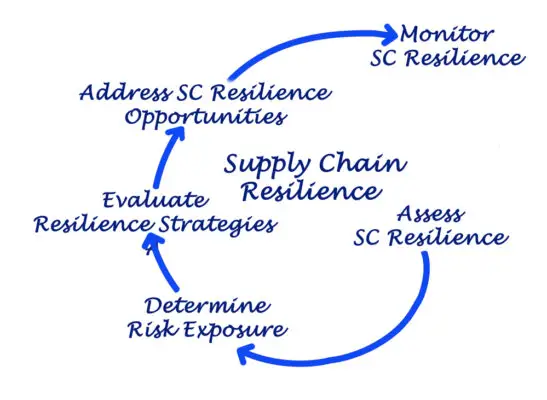The International Genealogical Index(IGI) has developed guidelines for substation project management. These guidelines are intended to assist project managers in the delivery of successful substation projects. The guidelines cover various topics, including project planning, execution, and control of all topics majorly done in civil engineering projects. They also provide recommendations for managing risks and ensuring project quality.
Substation projects can be complex, requiring the coordination of many different trades and specialties. The standard recommends practices for managing substation projects, including design, construction, testing, and commissioning. Testing can be done in the form of computer applications. The role of project managers in complying with the guidelines will ensure project success.
The IGI is a voluntary set of guidelines that is not legally binding. However, many utilities and organizations adopt the IGI to ensure that substation projects are completed safely and efficiently. The IGI can be downloaded from the International Electrotechnical Commission (IEC) website.

Scope Of The IGC Guidelines
The IGC guidelines cover all aspects of substation project management, from planning and design to construction, testing, and commissioning. The scope of the IGC includes new substations and extensions or upgrades to existing substations.
Utilities and other organizations that use the IGC guidelines are responsible for ensuring that all relevant stakeholders—including engineers, project managers, contractors, and equipment suppliers—are aware of and comply with the guidelines. Non-compliance with the IGC guidelines can lead to delays in project completion or suboptimal performance of the finished substation.
The IGI guidelines are organized into four sections:
Section 1: Introduction
Provides an overview of the IGI and its objectives and an introduction to substation project management. This section deals with various aspects of project management, including risk management, budgeting and scheduling.
Section 2: Planning
Covers the development of a project plan, including identifying stakeholders, setting objectives, and estimating costs and schedules. It is important to consider all the various individuals or groups that may be affected by or are interested in its success.
This process of identifying stakeholders helps to ensure their needs are taken into account during the planning stage. The next step is setting objectives, which help guide decision-making and determine whether the project is successful.
Finally, estimating costs and schedules allow for more accurate planning and budgeting and potential adjustments to accommodate unexpected changes during the project’s execution. Proper planning using these steps can lead to a smoother and more successful outcome for the project team and the stakeholders involved.

Section 3: Execution
Describes the execution phase of a substation project, including site selection, design, procurement, construction, commissioning, and handover. The execution phase of a substation project involves several steps to complete the project.
The first step is selecting the appropriate site for the substation, considering factors such as connectivity to other power grid components and local zoning regulations. Once a suitable location has been determined, design plans for the substation must be created, and necessary equipment procured.
Construction follows, with skilled workers building and installing the necessary components. During commissioning, experts ensure that all equipment is functioning properly and meeting applicable standards.
Finally, handover takes place, and the completed substation is ready to go live and serve its purpose in the power grid. These steps must be effectively managed to execute a substation project successfully.
Section 4: Control
Covers the procedures and methods used to monitor and control a substation project during its execution phase. This includes monitoring progress against plans, budgets, and schedules, identifying and managing risks, and ensuring quality.
Proper control of a substation project is crucial to ensure successful execution, meet budget and schedule requirements, and mitigate risks. Section 4 of the substation project manual outlines the processes and practices necessary for monitoring and controlling the project.
This includes regular progress assessments against planned goals, budgets, and timelines, identifying and managing potential risks, and adherence to necessary quality standards. These procedures are essential in maintaining control over a substation project and ensuring its completion.
Key Concepts In The IGI Guidelines
Several key concepts are important to understand to use the IGC guidelines effectively. These concepts include:
Functional requirements:
All substation projects must meet certain functional requirements to be successful. The functional requirements for a particular project will be determined by the utility or organization undertaking the project’s needs.
The functional requirements for a substation project can vary greatly depending on the specific needs of the utility or organization undertaking the project. However, some common functional requirements apply to all substation projects.
These include quality assurance, safe operation, power flow efficiency, and industry regulations and standards compliance. Meeting these functional requirements is essential for the successful operation of a substation.
Additionally, a thorough understanding and analysis of the project’s functional requirements during the planning phase can help to prevent costly errors and delays during construction and commissioning. In short, fulfilling all functional requirements is crucial for a successful substation project.
Systems engineering
A systems engineering approach should be used when planning and designing substation projects. This means considering all aspects of the project as a whole system rather than individual parts working in isolation.
In a traditional engineering model, each discipline looks at its part of the project in isolation. However, this can lead to problems with integration and functionality and potential conflicts between different components. Computer application support research on installation according to specifications to be implemented in the project’s structure.
Systems engineering addresses this by integrating all disciplines from the beginning, allowing for effective communication and collaboration throughout the project lifecycle. This approach also helps to identify potential issues before they arise and find solutions that benefit the entire system rather than just individual parts.
A systems engineering approach is crucial for successful planning and design in substation projects, where numerous complex components must work together. By taking a holistic view of the project, potential conflicts and challenges can be anticipated and addressed before construction even begins.
Interoperability:
Substation projects must consider interoperability with other systems—both within the substation itself and with external systems such as power plants or transmission lines.
This means considering how equipment within the substation will work together and how it will interact with other systems, such as power plants and transmission lines. Ensuring interoperability can prevent potential conflicts and delays and allow for smoother operation of the overall power grid.
It also allows for greater flexibility in the future, as new technology and equipment can easily be integrated without major disruptions. Taking steps to ensure interoperability can ultimately increase efficiency and pave the way for future growth.

Standardization:
Using standard components and equipment is encouraged to reduce complexity and increase interoperability.
Standardization can streamline processes in any industry or field and increase efficiency. By using standardized components and equipment, the risk of incompatibility is greatly reduced.
This, in turn, allows for smoother communication and collaboration between stakeholders. In addition, standardization can also lead to cost savings as it becomes easier to create, source and replace parts.
Despite potential resistance from some individuals or organizations, embracing standardization can ultimately lead to advancements in the overall industry. Always keep an open mind and assess whether standardization could benefit a given situation. Overall, considering standardization can result in a more streamlined and efficient operation.
Challenges in the use of IGI Guidelines
One challenge in using IGI guidelines is ensuring they are applied consistently and accurately and with resources. This can be difficult as different individuals and organizations interpret the guidelines differently with a different strategy. In addition, there may be pressure to deviate from the guidelines in certain circumstances, such as in cases where a decision might have financial or political implications.
Another challenge is keeping the guidelines updated as technology and societal values change. The guidelines must constantly evolve to address new ethical issues with technological advancements. Overall, while the IGI guidelines provide a valuable framework for making ethical decisions, their successful implementation requires continuous effort and objective analysis.
Conclusion
Project managers involved in substation projects should consult the IGC guidelines before beginning any work. The guidelines provide recommended practices for all aspects of substation project management, from planning and design to construction, testing, and commissioning.
Utilities and other organizations that use the IGC guidelines are responsible for ensuring that all relevant stakeholders—including engineers, project managers, contractors, and equipment suppliers—are aware of and comply with the guidelines. Non-compliance with the IGC guidelines can lead to delays in project completion or suboptimal performance of the finished substation.
Project management is a complex undertaking that requires careful planning and execution to deliver successful results. The IGI guidelines provide invaluable advice for those responsible for managing substation projects.

Chris Ekai is a Risk Management expert with over 10 years of experience in the field. He has a Master’s(MSc) degree in Risk Management from University of Portsmouth and is a CPA and Finance professional. He currently works as a Content Manager at Risk Publishing, writing about Enterprise Risk Management, Business Continuity Management and Project Management.

